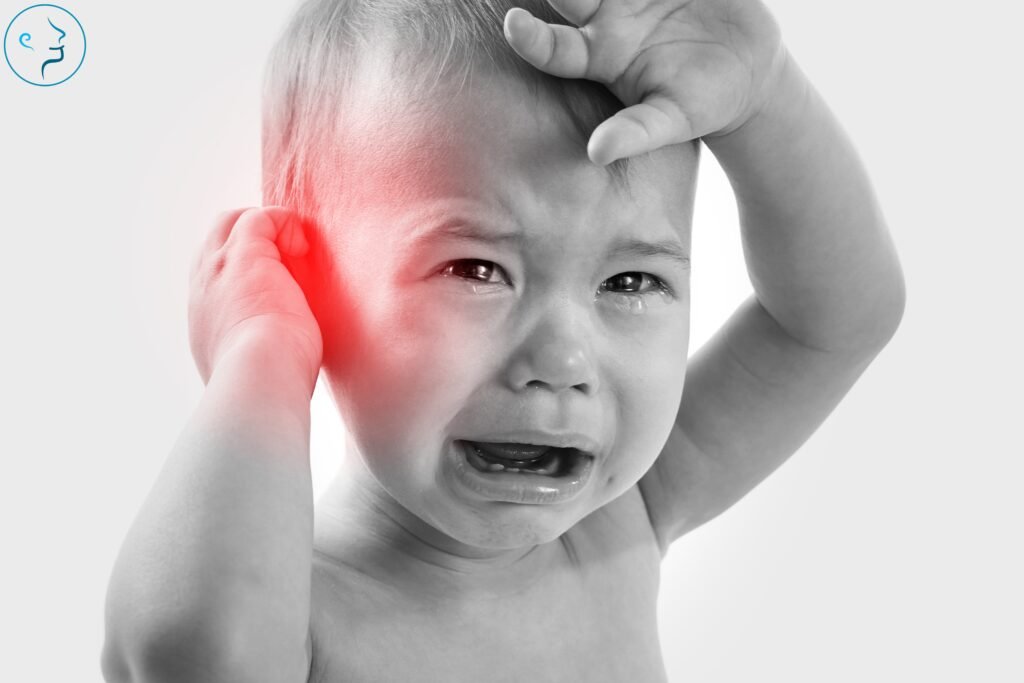
Why Are Ear Infections So Common in Children?
Ear infections are one of the most common reasons parents bring their children to the doctor — and for good reason. Seeing your child in pain from repeated earaches can be both frustrating and concerning. At ENT Clinic of Excellence in Dubai, we specialize in pediatric ear infection treatment and are here to help parents understand why these infections happen so frequently — and how to manage or prevent them.
👂 Why Are Ear Infections So Common in Children?
1. Their Ear Anatomy Is Still Developing
Children’s Eustachian tubes — which help drain fluid from the middle ear — are shorter, more horizontal, and narrower than adults’. This makes it easier for fluid and germs to get trapped behind the eardrum, leading to middle ear infections (otitis media).
2. Immature Immune Systems
A child’s immune system is still learning how to fight off bacteria and viruses, making them more susceptible to infections — especially during the first few years of life.
3. Frequent Colds and Respiratory Infections
Colds are more common in children, particularly those in daycare or school. These upper respiratory infections can inflame and block the Eustachian tubes, increasing the risk of ear infections.
4. Enlarged Adenoids
The adenoids (tissue near the back of the nasal cavity) can become enlarged or infected in children. Because they sit close to the Eustachian tubes, swollen adenoids can block ear drainage, causing repeated infections.
🔍 How to Recognize Ear Infections in Children
It can be difficult for young children or babies to express what they’re feeling, so watch out for these early signs:
- 👶 Ear pulling or tugging, especially in infants
- 😢 Crying and irritability, more than usual
- 🌙 Disturbed sleep or trouble lying down
- 🚶 Balance issues, due to the ear’s role in equilibrium
- 💧 Fluid discharge from the ear — may signal a ruptured eardrum
🛡️ Prevention Tips: What Parents Can Do
🧼 Encourage Handwashing
Good hygiene reduces the spread of colds and infections that often lead to ear problems.
🍼 Breastfeeding Benefits
Breastfeeding supports your baby’s immune system and may lower the risk of ear infections in the first year.
🚭 Avoid Secondhand Smoke
Children exposed to tobacco smoke are more likely to develop infections. A smoke-free environment is essential.
🧸 Limit Pacifier Use
Pacifiers are helpful in infancy, but prolonged use (especially after 12 months) can increase infection risk.
🩺 When Should You See an ENT Doctor?
While some ear infections may go away on their own, it’s best to consult an ENT specialist if:
- Symptoms last more than 48 hours
- Your child has a high fever (above 102°F / 39°C)
- There’s severe or continuous pain
- You notice fluid or pus draining from the ear
In some cases, doctors may recommend a “watchful waiting” approach. In more serious cases, antibiotics or further intervention may be needed.
🔁 What About Recurrent Ear Infections?
If your child has 3 or more infections in 6 months, or 4 or more in a year, they may be at risk of temporary hearing loss, which can affect speech and language development.
👂 Ear Tubes (Tympanostomy Tubes)
In these cases, ear tube surgery may be advised. These tiny tubes help ventilate the middle ear, prevent fluid buildup, and reduce the frequency of infections. The procedure is safe, quick, and often life-changing for children with chronic ear problems.
🏥 Personalized Pediatric ENT Care in Dubai
At ENT Clinic of Excellence, we offer comprehensive care for children with ear infections, from initial diagnosis to treatment and long-term management. Whether it’s routine infections or more complex cases requiring ear tubes or adenoid evaluation, our expert team led by Dr. Hatem Dalati is here to help.
📞 Schedule a Consultation Today
Call +971-502480249 or visit our website to book an appointment with our pediatric ENT specialist in Dubai.
Let us help your child stay healthy, happy, and pain-free.
🏷️ Included Keywords:
pediatric ENT specialist Dubai, ear infection treatment Dubai, ENT clinic Dubai, recurrent ear infections in children Dubai, ear tubes for kids Dubai, child ear pain Dubai, adenoid problems Dubai